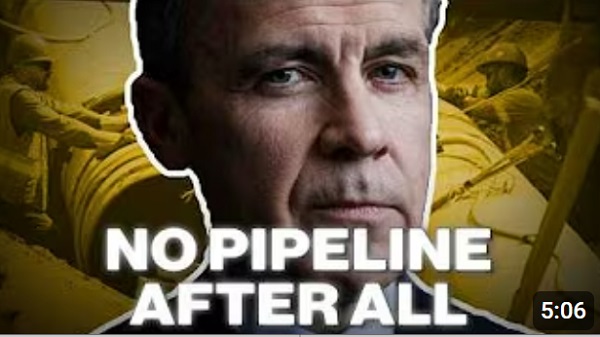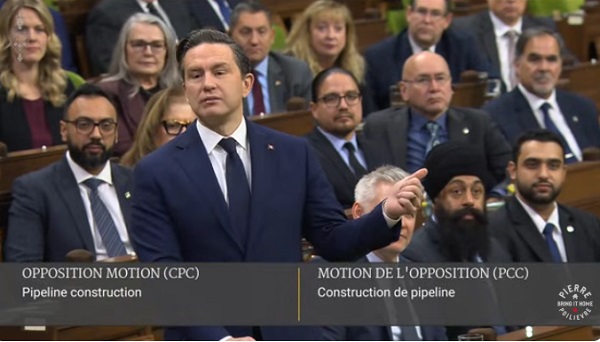Alberta
Class Action Lawsuit Against the Province of Alberta – Rath on Behalf of Ingram and Scott

|
|
To preface, the amount of knowledge I have in our legal system would fit into a thimble with a lot of room leftover to hold, well…a lot of other stuff that would fit into a thimble.
But I’m going to do my best to cover the certification hearing for the Class Action Lawsuit against the Province of Alberta by Rath and Company, on behalf of Rebecca Ingram and Chris Scott.
For the purposes of keeping this to a reasonable length, I’ll be hitting more along the lines of the high-notes instead of going through and summarizing the thousands of pages submitted by Rath and Co + the Province and keep to what I found most interesting throughout the 2 days I’d spent down at the courthouse viewing. The hearing was to allow both sides to submit their briefs and so that Justice Feasby could make sure that he understood the base of their cases, qualify information and take it away for judgement.
Even if Rath is successful in having this Class Action Certified, there is still a long road ahead to succeed in getting damages covered and a trial to be had and because of the specifics of the mishandling by the Province throughout the pandemic, if they are successful here, it doesn’t mean that every other province can proceed ahead, under the same criteria.
What does this mean?
The previous case against the Province with Rebecca Ingram, showed that the non-pharmaceutical interventions – lockdowns, businesses closed, capacity limits…were ruled Ultra Vires (beyond legal power or authority), by Justice Romaine…in that, these weren’t actually made by the Chief Medical Officer of Health (CMOH), Deena Hinshaw, they were made by Cabinet…and Cabinet hid behind Hinshaw issuing these orders under the Public Health Act instead of working with the Emergency Management Act.
Because of “Cabinet Privilege”, information was revealed by the CMOH and Justice Romaine – in camera (private) – we can only speculate the reasons for this.
One could argue that because the province and Alberta Health Services got 100% of everything wrong during the pandemic, that this was just another link in the very weak chain…
However, it’s also possible that the Cabinet Members making these decisions wanted to hide and remain hidden for political purposes, as in…those making the decisions to close down businesses didn’t want to have to face voters in a subsequent election, knowing the damages that they’d caused in the business community.
Seeing how many small businesses were closed down, to never reopen…savings spent, jobs and homes lost, lives impacted by these decisions, arguably touching every single person in the province, would make for some bad press and a constituencies filled with voters showing up with a chip on their shoulder towards those who made these decisions and still chose to run for Legislature again.
In addition to this…If the orders were run through the Emergency Management Act, all of the businesses impacted would be entitled to compensation, whereas under the Public Healthcare Act…they weren’t.
It’s based on these specificities that Rath argued that the Province acted in ‘Bad Faith’ as the basis for their case, in that, the province made decisions that they didn’t have the authority to make and absolutely had to have known would harm businesses and made them through the PHA which restricted these businesses from being compensated.
Rath had completed his presentation of their brief before lunch on the first day, where Feasby had a couple of points that he wanted clarified…which was completed after lunch on this same day.
And then…the Province took the podium.
As I’d previously stated, this was a bloodbath for the afternoon of Day 1 and continued on throughout their presentation on Day 2, where by Feasby openly mocked each member of the Province – Dube, Chu and Flanders.
Rightfully so, if I might add, because a lot of their logic was illogical and even to those of us in the gallery, laughable both with and without comments from the Justice.
On day 2, because of the chorus of opened mouthed guffaw from the gallery, we’d all received a warning try and keep it down.
Arguments made by the province which were stunning and laughable:
- The public does have a right to accountability and that these would be ‘Ballot Box Issues’, of course recognizing that Cabinet was the ones who made these decisions but because they were hidden behind Cabinet Confidence, we can’t actually have accountability, which of course Dube knew;
- The Plaintiffs (Rath on behalf of Ingram and Scott) needed to name the members responsible – which were, again, hidden by cabinet confidence;
- There is no fiduciary accountability afforded under the Public Health Act, where the interventions were deemed Ultra Vires;
- The Province couldn’t have known that businesses would be harmed by the orders – where Feasby stated that it would be impossible for them to Not Know;
- Businesses are not members of a vulnerable group – though were identified by the CMOH orders;
- There is no Nexus or Proximity between the Acts (CMOH orders) and Injury – where Feasby stated causation where orders made, closed businesses, that caused injury was the connection;
- A breach of the Bill of Rights does not necessitate compensation, where the use of the Public Health Act was engaged illegally by cabinet;
- No common issues exist – where all businesses that were impacted were impacted financially;
- Not all businesses that were impacted abided by the CMOH orders, though they may be able to still show financial losses during these times;
- Abuse of Power, by Cabinet in their orders, wasn’t actually an Abuse of Power because it was done in good faith;
- Even without the orders, during the pandemic, people still wanted to just stay home and avoid going out – they actually said this;
- Although the Pandemic Orders were deemed Ultra Vires, they were valid at the time. This was particularly stupid as an argument made repeatedly by Chu and lost the province some large points with Feasby. Her logic is that the orders WERE Valid up until the time they were deemed Ultra Vires…where Feasby stated, a definitive ‘Nope’. Once they were deemed Ultra Vires, this extended back to when they were put in place.
- The Plaintiffs should be suing Alberta Health Services, arguing that AHS is not the province, again another stupid point where the judge stated, “You can’t stand here with a straight face and make this as an argument”.
- Expropriation of businesses wasn’t actually expropriation (businesses shut down or limited in capacity were essentially expropriated – partially or fully taken away from leaseholders and property owners), because there were no transfer of titles and they weren’t kept by the province on a forever hold. When I’d asked Eva Chipiuk about this, she stated that the province had effectively made this up as terms of expropriation, this isn’t what it actually means…and this was clarified to the Justice by Jeff on reply following the Province stating their case on Day 2.
- Classes of businesses could not be identified for a Class Action Lawsuit – where, orders put out by the CMOH on behalf of Cabinet, specifically identified the types of businesses that would need to close or limit capacity. Jeff made a point on this where in the early stages, Casinos and Stripper Bars were allowed to be left open while Schools were closed. I did get a good laugh out of this recollection of events;
- It would be more beneficial for businesses who were harmed to represent themselves individually instead of through a Class Action – where smaller businesses would pay in excess of their claim in legal fees and clog the courts for decades;
- Businesses that lost money throughout this time would have immediately made it back once they were reopened – of which there is absolutely no way they could make this determination especially given the fact that hundreds of businesses closed forever during this time;
- Chris Scott and the Whistle Stop Cafe isn’t a suitable representation in the class action because Scott didn’t abide by CMOH orders, crowd funded over $100k, needed to hire more staff because of the surge of business that he’d received because of publicity around his location, paid off a loan for property, all in 2021…where, Chris did actually abide by CMOH orders in 2020, did lose money, was on the verge of bankruptcy and only worked to mitigate damages following several months of losses due to the CMOH orders;
- Chris Scott may have actually made more because of the pandemic, despite the fact that he was arrested, closed down, abided by CMOH orders in 2020, was getting death threats because of being branded negatively through media spun by his lack of compliance for the orders to keep him from losing everything;
There may be more…this is what I could get out of the 36 pages of notes that I’d taken over the course of the 2 days…but basically the Province brought in the C-Team of Lawyers making in attempts to make the case that:
AHS is not the province, acted illegally but in good faith, is not responsible for any damages because they didn’t fully expropriate businesses forever, couldn’t have known that businesses wouldn’t suffer from financial losses in being closed or restricted for months on end and even if they did, probably made their money back if not more money when they finally opened and couldn’t be lumped together because REASONS.
Whereas against the province, Rath and Company makes the claim that:
Cabinet made decisions that turned into illegal orders under the Public Healthcare Act, not using the Emergency Management Act so that they could hide the identity of the decision makers and skate on being financially liable for losses they knew would be incurred by businesses that were shut – acting in bad faith.
And again…while I don’t know a whole lot about the legal system, all of the laws and terms used throughout these 2 days, can appreciate that all requirements for a Class Action were met and responded to. The legality and relevance of these will be weighed by Justice Feasby and he’d seemed confident that he’ll be able to have a ruling on the Certification for Class Action by December 1st, 2024…and closed out with a statement that he wasn’t going to be accepting any additional documentation from either party. They’d effectively had their ‘day in court’, and had opportunity to clarify their cases.
Hope ya made it through all of this…and I hope it makes as much sense to you as does to me as in a solid – kinda. If you were watching the livestream or in the gallery and noted anything additional worthy of mention or correct me in any errors, please do so in the comments.
I’m looking forward to the next leg in this journey!
Alberta
They never wanted a pipeline! – Deputy Conservative Leader Melissa Lantsman

From Melissa Lantsman
Turns out the anti-development wing of the Liberal Party never stopped running the show.
Today, we’ll see if the Liberals vote for the pipeline they just finished bragging about.
Spoiler: they won’t. Because with the Liberals, the announcements are real, but the results never are.
Alberta
Premier Smith: Canadians support agreement between Alberta and Ottawa and the major economic opportunities it could unlock for the benefit of all

From Energy Now
By Premier Danielle Smith
Get the Latest Canadian Focused Energy News Delivered to You! It’s FREE: Quick Sign-Up Here
If Canada wants to lead global energy security efforts, build out sovereign AI infrastructure, increase funding to social programs and national defence and expand trade to new markets, we must unleash the full potential of our vast natural resources and embrace our role as a global energy superpower.
The Alberta-Ottawa Energy agreement is the first step in accomplishing all of these critical objectives.
Recent polling shows that a majority of Canadians are supportive of this agreement and the major economic opportunities it could unlock for the benefit of all Canadians.
As a nation we must embrace two important realities: First, global demand for oil is increasing and second, Canada needs to generate more revenue to address its fiscal challenges.
Nations around the world — including Korea, Japan, India, Taiwan and China in Asia as well as various European nations — continue to ask for Canadian energy. We are perfectly positioned to meet those needs and lead global energy security efforts.
Our heavy oil is not only abundant, it’s responsibly developed, geopolitically stable and backed by decades of proven supply.
If we want to pay down our debt, increase funding to social programs and meet our NATO defence spending commitments, then we need to generate more revenue. And the best way to do so is to leverage our vast natural resources.
At today’s prices, Alberta’s proven oil and gas reserves represent trillions in value.
It’s not just a number; it’s a generational opportunity for Alberta and Canada to secure prosperity and invest in the future of our communities. But to unlock the full potential of this resource, we need the infrastructure to match our ambition.
There is one nation-building project that stands above all others in its ability to deliver economic benefits to Canada — a new bitumen pipeline to Asian markets.
The energy agreement signed on Nov. 27 includes a clear path to the construction of a one-million-plus barrel-per-day bitumen pipeline, with Indigenous co-ownership, that can ensure our province and country are no longer dependent on just one customer to buy our most valuable resource.
Indigenous co-ownership also provide millions in revenue to communities along the route of the project to the northwest coast, contributing toward long-lasting prosperity for their people.
The agreement also recognizes that we can increase oil and gas production while reducing our emissions.
The removal of the oil and gas emissions cap will allow our energy producers to grow and thrive again and the suspension of the federal net-zero power regulations in Alberta will open to doors to major AI data-centre investment.
It also means that Alberta will be a world leader in the development and implementation of emissions-reduction infrastructure — particularly in carbon capture utilization and storage.
The agreement will see Alberta work together with our federal partners and the Pathways companies to commence and complete the world’s largest carbon capture, utilization and storage infrastructure project.
This would make Alberta heavy oil the lowest intensity barrel on the market and displace millions of barrels of heavier-emitting fuels around the globe.
We’re sending a clear message to investors across the world: Alberta and Canada are leaders, not just in oil and gas, but in the innovation and technologies that are cutting per barrel emissions even as we ramp up production.
Where we are going — and where we intend to go with more frequency — is east, west, north and south, across oceans and around the globe. We have the energy other countries need, and will continue to need, for decades to come.
However, this agreement is just the first step in this journey. There is much hard work ahead of us. Trust must be built and earned in this partnership as we move through the next steps of this process.
But it’s very encouraging that Prime Minister Mark Carney has made it clear he is willing to work with Alberta’s government to accomplish our shared goal of making Canada an energy superpower.
That is something we have not seen from a Canadian prime minister in more than a decade.
Together, in good faith, Alberta and Ottawa have taken the first step towards making Canada a global energy superpower for benefit of all Canadians.
Danielle Smith is the Premier of Alberta
-

 National21 hours ago
National21 hours agoLiberal bill “targets Christians” by removing religious exemption in hate-speech law
-

 Business2 days ago
Business2 days agoThe EU Insists Its X Fine Isn’t About Censorship. Here’s Why It Is.
-

 Business2 days ago
Business2 days agoCanada invests $34 million in Chinese drones now considered to be ‘high security risks’
-

 Bruce Dowbiggin2 days ago
Bruce Dowbiggin2 days agoWayne Gretzky’s Terrible, Awful Week.. And Soccer/ Football.
-

 Economy2 days ago
Economy2 days agoAffordable housing out of reach everywhere in Canada
-

 Business18 hours ago
Business18 hours agoLooks like the Liberals don’t support their own Pipeline MOU
-

 Health2 days ago
Health2 days agoCDC Vaccine Panel Votes to End Universal Hep B Vaccine for Newborns
-

 Business1 day ago
Business1 day agoThe Climate-Risk Industrial Complex and the Manufactured Insurance Crisis





